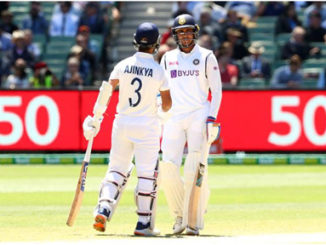

The author of ‘Musings on Medicine, Myth, and History: India’s Legacy’- Dr. V.K. Raju is working on another book. Unlike the earlier book, wherein he presents a holistic view of ancient medical history and Indian developments in ophthalmology, the authors’ medical specialty, in ‘Genius of Hinduism-Rigveda to Radhakrishnan’, hetraces the history of Hinduism’s intellectual prowess and spiritual values evolving since the times of the Vedas to the modern times, symbolized by the great philosopher Dr. Sarvepalli Radhakrishnan.
The Indian Panorama had published the first chapter of ‘Genius of Hinduism-Rigveda to Radhakrishnan’ a few weeks ago. The article can be read at www.theindianpanorama.news
The article below ‘Status of Women’ is the second chapter which we are bringing to the readers of The Indian Panorama. Readers are requested to send in their comments to salujaindra@fgmail.com, or correspond directly with the author -Dr. V.K. Raju- at vkraju@comcast.net
Status of women
MATRU DEVOBHAVA: Mother, you are embodiment of God!
The Hindu mythology has a rather beautiful concept of ARDHANARISWARA – a half female, half male combination to make the perfectwhole(Shiva and Shakti). Whenever we refer to a divine couple, the name of the female is always taken first.SITARAM, RADHAKRISHNA,GAURISHANKAR -giving the high position reserved for the female. The woman is celebrated as the most powerful and the empowering force in Hindu Upanishads, sastras, and puranas. Most importantly the DEVI SUKTA, hymn of Rigveda,the oldest scripture of Hinduism declares the feminine energy as the essence of universe, the one who creates all matter and consciousness, the eternal and infinite,the metaphysical and empirical reality (Brahman).
The Vedas asserted —‘THE WIFE IS THE HOME’.In spite of other handicaps, the mother usually does rule over the domain. In the Mahabharata, (one of the epics of Hinduism) the five Pandava brothers share a common wife, Draupadi, who unlike the gentle Sita (of Ramayana, another epic) more than held her own with all of them. The first woman of India or probably of anywhere in the world, to think of women’s liberation and equality as we do today, was Chitra of Mahabharata era. She was a Princess, the only child of the king of Manipur. As she undertook all the arduous tasks of an heir,she became rather rough and unfeminine. But One day she espied Arjuna, the Pandava prince, one of the greatest heroes Mahabharata, hunting in the forest. Chitra fell desperately in love with the handsome prince; but despaired of catching his eye because of her own plainness and lack of appeal.She beseeched the goddess to grant her beauty for just one year and indeed she was transformed and Arjuna was bewitched. No one recognized Chitra in her new guise.She was ecstatic but the administration suffered, the people of the state felt unprotected and missed her and wondered where and how she had disappeared. Arjuna’s interest was held by the many tales he heard of the princess’valor and ability. He yearned to meet the famous Princess. Chitra decided to reveal her identity and her original form. Then It is that she says to Arjuna,”I am Chitra. no goddess to be worshipped nor yet the object of common pity to be brushed aside like a moth with indifference. If you deign to keep me by your side in the path of danger and daring, if you allow me to share the great duties of your life, then you will know my true self “. In ancient times women enjoyed full freedom and equality.There were philosophers such as Gargi. In Vedic literature, she is honored as a great natural philosopher, renowned expounder of the Vedas.
Sanga Mitra, daughter of emperor Ashoka (2nd century BC) was the first missionary, undertaking the long and perilous journey by road to a port on the East Coast and then by sea, in order to carry the message of Buddha’s teachings to Ceylon (Sri Lanka).One of the greatest 24 thirthankaras, the great teachers of the Jains was Malli, a Princess of Videha later known as Mallinath.
Lilavati assisted her father Bhaskaracharya who was an eminent mathematician.
Unfortunately, as the structure of the society crystallized, the status of women changed. Manu,a 7th century law maker of Hindus,had some kind words to say about women. But this seemed to be by way of Aesop to compensate for firmly relegating them to a secondary position in society, subservientto their menfolk. Inevitably some women did break bonds.Mirabai, the rebel saint Princess of Chittur who left home to lead a life of mendicant, wandering about expressing her love for Krishna in songs of her own tender composition. Laxmi Devi wrote a great commentary on the Mitakshara (is a legal commentary on the Vajnavalkyasmriti, best known for its theory of inheritance by birth).
Where outside India could one find a woman such as Ahalyabai? Deeply religious and renowned as a saintwhen she assumed the regency of her state (Indore, central India)she proved to be an able administrator and courageous general in battle. Two other women who have captured the imagination —-Rani Lakshmi bai of Jhansi in the North and RaniChinnamma of Kittur in the South. They both died while fighting the British. The English general who opposed Lakshmi bai called her the bravest of the rebel leaders. She was just a young woman of 20 then.
India is indebted to many foreigners. Some gave us a deeper understanding of our own philosophy at a time when our colonial rulers seemed to have convinced us to deny its worth, thus rekindling the embers of our religious heritage and dominant national pride.
Margaret Noble who took the name of sister Nivedita, was the first western woman to be received into any monastic order in India. She was initiated by Swami Vivekananda.
In Hindu culture woman is the conserver of tradition, but she’s also the absorber of the shocks of the future.
(Dr. V.K. Raju is an ophthalmologist, based in Morgantown, West Virginia. He can be reached at vkraju@comcast.net)






Be the first to comment